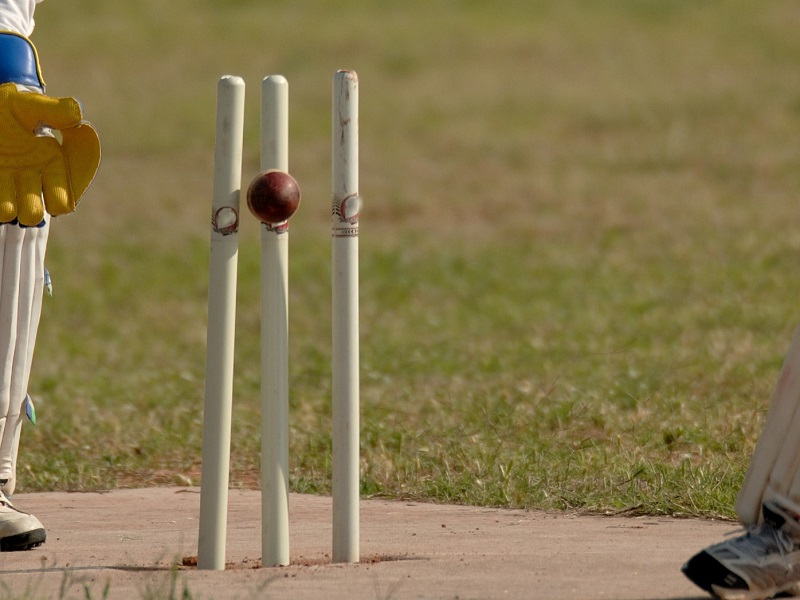|
 The worst has happened and your form has left you. The worst has happened and your form has left you.
After all that waiting. After all that practice in the nets. After all those articles and videos you consumed of tips and tricks. Cricket has still bitten you. It hurts.
It makes you want to chuck it all in for something less stressful, like skydiving.
Before you pack you parachute, here’s some things that can help you get back on track and return to the runs you deserve.
Where’s the pain?
If you go to the doctor with an injury, the first thing they ask is where it hurts. This is the same when you have suffered mental scars from cricket too.
What’s the really painful part?
I mean, when you get down to it?
Here’s some possible reasons:
- You are ashamed because you let your team down.
- You are afraid you might be dropped.
- You are worried you won’t be picked for higher honours.
- You’re angry you wasted all that time and effort.
- You’re embarrassed because you have been shown up as a bad player.
- You are anxious about what other people think of you.
- You realise you can’t call yourself a cricketer if you keep failing.
- It’s no fun when you can’t have your fair go with the bat!
Every one of these feelings is a reasonable reaction to failure on the cricket pitch. We are all looking for meaning in life, and when life throws you proof of your failure it stirs primal emotions like fear and anger. Even when we don’t realise it.
Recognising why you are upset at your duck is important if you are going to turn it around. Dig deep and find that core, primal reason.
You’re going to need it.
Patch yourself up
When you have spotted why you are feeling the pain, you need take a pain killer.
This won’t solve the problem - that comes later - but it will allow you to feel better and be more rational so you can move on.
In the immediate aftermath of your failure it’s easy to give in to the deep emotion and react angrily. We have all played in teams where batsmen shout and throw things in the changing room. I’m sure you know a player who goes and sits as far as possible from the team after failing, unable to face even his best friends.
In reality, in this moment it’s best to face that fear.
Give in to it and you cause more damage to your game and to your team.
Take the painkiller.
- Notice the emotion you are feeling as you walk off and watch it float past instead of letting it take over. You are not your feelings.
- Accept, whatever your deepest pain, you can do nothing about it in this moment. Instead of anger, tell yourself that you tried your best. You did try your best, right?
- Walk off the pitch, take off your pads, sit down next to your team. Apologise for the failure without making an excuse. Tell the next batsman anything you can about what is happening in the middle.
- If you feel the emotion coming back, observe it and let it pass by without letting it take you over. It’s a fleeting, irrational response. It does not define who you are. It does not make you a better cricketer in this moment or in future moments.
- Do this as many times as you feel the pain until it has dulled. You will know because you can joke about it and laugh at it quickly.
- THE ABOVE STEPS ARE NOT EASY! STICK AT IT!
In the aftermath of a highly charged dismissal, this pain killer is hard to take. You may find yourself becoming overcome by emotion and rationalising this by saying it makes you play better.
This is untrue. Emotions have no cricket skills. You do. And you are not your emotions.
Plus, when you consider the results of giving in to “red thinking” - catastrophic thinking, reduced performance, anger, shame and damage to the team culture - do you really have any other option?
Get cricket rehab
When the dust has settled and the game is over, you can deal with the issue rationally. Let’s call this step your rehab.
You got a duck. That’s a fact. What you do next is your choice. You can see it as proof of your terminal decline as a cricketer. You can see it as pure bad luck to ignore. You can see it as evidence you will never achieve your goals.
Science has shown that all those things are unhelpful.
Instead, the research shows your best response is to see failure as an opportunity.
So, assess what happened.
You can use PV/MATCH and PV/ONE videos to analyse how you played.
What do you spot: A technical issue, a tactical failing, a type of delivery that causes you trouble?
Remember to look at your whole innings in context and not just the dismissal.
Then, ask yourself, “what can I do to solve this issue”? You are a clever person who is good at solving problems (you read PitchVision, you must be). Solve them. Train to smooth away weaknesses or grow strengths. You know these things instinctively, you just need to let your cricket develop with an accountable approach.
Finally, get to work.
Hit those nets. Not out of fear or anger. Out of desire to improve your game. Out of passion to enjoy your cricket. Out of duty to helping others on your team to enjoy cricket too. Out of pleasure in building your craft.
Ducks happen. Bad runs of form happen. Your response to them is the only thing you fully control. So, choose right and start enjoying life.
Discuss this article with other subscribers
|

.jpg)
.jpg)


.jpg)
.jpg)
